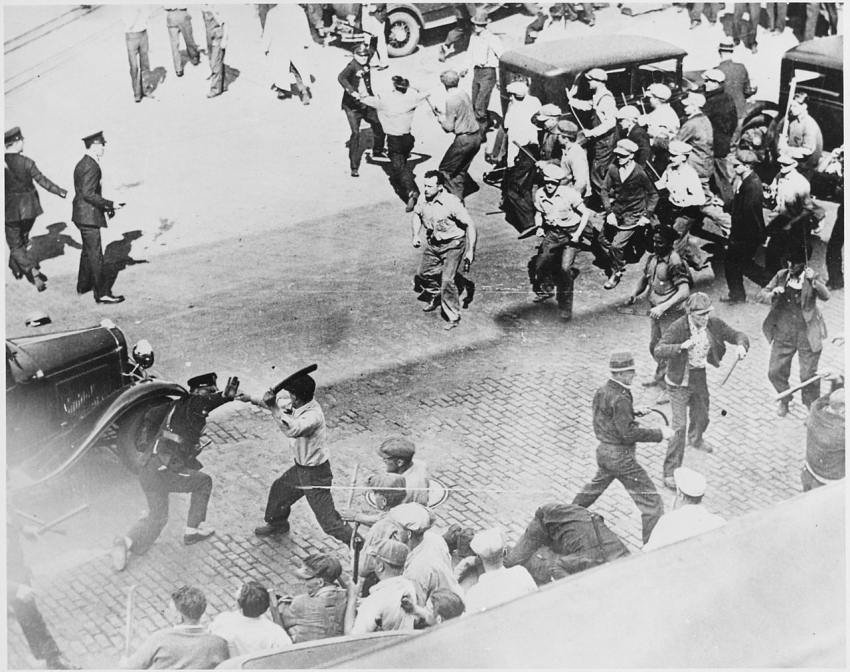As Attacks on Unions Continue, Bringing Back the Strike May Be Our Only Hope

[font size="1"]
Workers battle police in the streets of Minneapolis during the 1934 general strike. (National Archives and Records Administration / Wikimedia Commons)[/font]
(
In These Times) On December 14, Chicago Teachers Union Vice President Jesse Sharkey announced the results of the union’s strike authorization vote. For the second time in three years, the union’s membership voted overwhelmingly to strike if necessary. "Our ability to withhold our labor is our power," declared CTU President Karen Lewis on the eve of voting.
That axiom, that strikes are where unions derive their power, is pretty out of favor these days. A wave of disastrous strikes and lockouts beginning in the Reagan era that helped deunionize much of American industry has left the surviving labor movement skittish about the prospect of full-scale walk-outs. But bright spots like Fight for 15, Bargaining for the Common Good and the Chicago teachers strike have shown that workers can win strikes (if one defines victory as workers walking away from the ordeal feeling more powerful). Labor activists and leaders, particularly as they anticipate a viciously anti-union Supreme Court decision in Friedrichs v. CTA, have to figure out more strategies to revive the strike weapon in our current era.
How strikes became a “bad idea”
Ironically, the seeds of labor’s 1980s defeats were planted during its best seasons for growth in the 1930s. During the wave of sit-down strikes that grew union membership by leaps and bounds, Congress passed the National Labor Relations Act in 1935. The purpose of the act was to establish an orderly process for certifying unions and compelling employers to bargain in good faith with them. The plain language of the law also made it illegal to fire an employee for union activity.
But in two of the early Supreme Court cases that established the constitutionality of this law, the court casually cut into workers’ rights to their jobs.
In a 1939 case called
NLRB vs. Fansteel Metallurgical, the court ruled that the NLRB cannot compel the reinstatement of a fired worker who broke the law, even if his illegal activity was part of an otherwise protected union activity like striking. Sit-down strikes, the physical occupation of someone else’s property to prevent their business from operating without you, was simply not going to be a protected activity under this new labor law regime. .................(more)
http://inthesetimes.com/working/entry/18762/as_attacks_on_unions_continue_bringing_back_the_strike_may_be_our_only_hope
